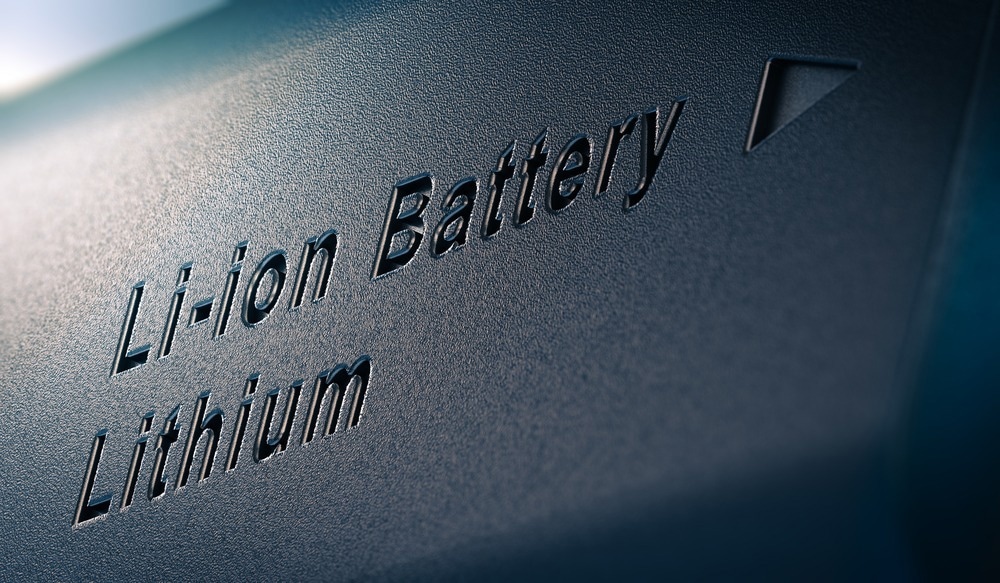Researchers have produced a study in the journal ACS Energy Letters discussing a novel single-step electrochemical method for lithium extraction by bypassing the step of separation/purification which tends to increase the cost of production.

Study: A Lithium Feedstock Pathway: Coupled Electrochemical Extraction and Direct Battery Materials Manufacturing. Image Credit: Olivier Le Moal/Shutterstock.com
The Importance of Lithium
Owing to its numerous uses across multiple industries, particularly as a result of the rapidly expanding consumption of Li-ion/Li batteries for consumer devices, electric cars, and grid electricity retention, lithium is quickly becoming a crucial commodity. By 2030, the demand for Li is anticipated to be greater than 2 million metric tons.
Limitations of Brine and Ore Extraction Processes
Presently, salty lake solutions and ores are mined for Li, which is then separated from the ore and purified using chemicals. In practice, this strategy faces two major obstacles. First, the global consumption for Li often cannot be satisfied due to the restricted and inconsistent global distribution of the deposit.
Second, the treatment processes for deposition and purifying are sluggish and ineffective (50% recovery), and they heavily rely on the treatment of waste and clean water, neither of which is ideal from a technical or financial standpoint.
Which Novel Methods are Being Researched?
The standard centrifugation techniques, which call for pre-concentration of brine, deposition reagent, and post-separation of Li, are time-consuming and expensive despite the technical competence of the manufacturing operation.
The low Li content and contamination from other ions have prevented direct Li separation from catalytically complicated, low-Li fluids, which is preferred. Numerous innovative Li recovery techniques have been presented as a means of overcoming the obstacles based on the principles of sorption, nano-purification, electrocoagulation, and electrolysis.
Novel Lithium Extraction Approaches
With over 7% recovery after 72 hours, a unique electrodialysis method for Li extraction using a homogeneous lithium nanocomposite has been demonstrated. Additionally, using a solid Li1+xAlyGe2-yPO43 membrane, Zhou's team created an electrochemical technique and verified the adsorption of Li metal from simulated seawater.
However, the compositional alteration and endurance of the Li compounds in aqueous solutions are crucial for continual Li processing techniques.
After Li is extracted, numerous expensive processes of absorbent replacement and Li filtration are still necessary to produce industrial-scale useable Li supplies. This is thus a common challenge for the abovementioned Li extraction process.
The novel technology differs in certain aspects. A Li-ion-specific barrier (Li1.5Al0.5Ge1.5(PO4)3, LAGP) and inexpensive electrochemical manganese dioxide (EMD) are employed as the barrier and Li host, respectively, and it is based on a combination of membrane electrolytic and electrochemical intercalation processes.
The researchers concentrated on material with an exceptional Li separation performance and efficiency, limiting post-processing expenses rather than employing low-capacity compounds such as intrinsically reconfigurable FePO4.
Advantages of the Modern Technique
The three main benefits of the proposed technology are as follows. First, the Li extracted is exceptionally pure. The second and most important is the end to the expensive Li segregation and purification. High effectiveness and cheap cost are the third major advantage it offers.
Dependent on the formulation of the desired cathode, the collected Li and EMD host (Li-EMD) are preliminary components for rechargeable cell cathodes that can be used effectively for cathode synthesis with the inclusion of essential ingredients.
Research Findings
Determined by the measured Li removal capability and the anticipated EMD potential, the total Li intercalation volume was 220 mAh g-1, or 71.4 percent recovery efficiency. If all Mn ions are considered to have a 4+ valence, the reported harvesting ability suggests that 0.772 mol of Li may be extracted by 1 mol of EMD, which is compatible with the chemical analysis.
Using the Li reclaimed using the EMD/LAGP process, a techno-economic analysis (TEA) was carried out to calculate the cost of producing Li-battery cathodes. Compared to the $18.9 kg-1 of Route LiMn2O4-R2, the MBSP of Route LiMn2O4-R1 is substantially lower at $12.8 kg-1.
The overall findings showed that the cost of the spinel LiMn2O4 and NMC333 produced using this technique is cheaper than that of other Li separation techniques, and even on par with that of consumer applications.
In short, this Li recovery method may overcome the issues of Li scarcity and cell expense, enabling the electrification of vehicles and reducing emissions of the socioeconomic system.
More from AZoM: What is Glow Discharge Optical Emission Spectrometry
Reference
Lu, D. et. al. (2022) A Lithium Feedstock Pathway: Coupled Electrochemical Extraction and Direct Battery Materials Manufacturing. ACS Energy Letters, Volume 7. 2420 - 2427. Available at: https://doi.org/10.1021/acsenergylett.2c01216
Disclaimer: The views expressed here are those of the author expressed in their private capacity and do not necessarily represent the views of AZoM.com Limited T/A AZoNetwork the owner and operator of this website. This disclaimer forms part of the Terms and conditions of use of this website.